Emergency Preparedness for All
Being prepared for emergencies before they happen is crucial to enduring and recovering from adverse community events like severe weather, terrorist attacks, and disease outbreaks. However, it's important to remember that not all community members experience emergencies in the same way. An inclusive approach to emergency preparedness ensures that all residents—regardless of age, gender, income, or ability—are accounted for, which is essential for the overall health and well-being of the community. This includes recognizing and addressing mental health and stress, which often escalate during emergencies.
Tennessee's diverse landscape, from mountains to plains, contributes to the range of potential emergencies. Each region may face different types of hazards, requiring tailored preparedness measures. In the last few years alone, we have experienced several events that highlight the importance of preparing before disaster strikes:
- Global pandemic: The COVID-19 crisis has resulted in illness and death, strained healthcare resources, disrupted businesses and education, impacting public health, the economy, and daily life in Tennessee.
- Several 100-year storms: Tennessee experiences a range of severe weather events, including tornadoes, thunderstorms, flash floods, and severe winter storms. These weather events can cause property damage, utility outages, and pose risks to personal safety.
- Drought: Drought in Tennessee can harm agriculture, strain water resources, and impact ecosystems, affecting the state's economy, environment, and daily life, with potential consequences for agriculture, water supply, recreation, and infrastructure.
- Record high temperatures: High temperatures can lead to heat-related health issues, a strain on energy resources for cooling, and potential harm to agriculture.
The state of Tennessee has plans in place to help keep people safe during these times, but more can always be done to ensure vulnerable groups, such as elderly residents, low-income families, and individuals with functional and access needs, are included in these plans. Plans should also provide tools and resources to manage the emotional and psychological stress that adverse events can cause. Inclusive emergency preparedness is not just an ethical responsibility but also a pragmatic one: the more members of a community who are prepared, the more resilient that community will be.
Emergencies are adverse community experiences that can disrupt community livelihood by threatening physical well-being, causing significant mental and emotional stress, and disrupting local economies and community cohesion.
Physical Health
Not all community members have the same physical needs. Infants, children, the elderly, and individuals with disabilities may have unique health requirements that standard emergency procedures may not account for. Inclusive preparedness ensures that medical supplies, shelter facilities, and transportation are accessible to all, thus mitigating risks to physical health.
Mental Health, Stress, and Trauma
Emergencies can heighten mental health issues, induce stress, and cause trauma that can affect individuals long after the event has passed. Inclusive planning should integrate mental health considerations by:
- Offering stress management resources
- Providing accessible mental health care services during emergencies
- Distributing culturally and linguistically appropriate mental health information during and after emergencies
- Facilitating trauma-informed care and resources to help community members cope with and recover from traumatic experiences.
Community Cohesion
An inclusive approach fosters community solidarity. Inclusion ensures that everyone has a role to play, which can be particularly empowering during trying times and beneficial for the collective mental well-being.
Inclusion in emergency preparedness is not a luxury but a necessity for maintaining community health and well-being. It considers the multifaceted impacts of emergencies—both physical and mental—and ensures that no one is left behind, including those grappling with the effects of trauma. An inclusive community is a resilient community, better equipped to handle the challenges of adverse events and quicker to recover and rebuild.
Certain groups are more at-risk during emergency situations due to preparation and evacuation access issues. They may also have specific needs that should be addressed in community disaster planning — needs that are often overlooked.
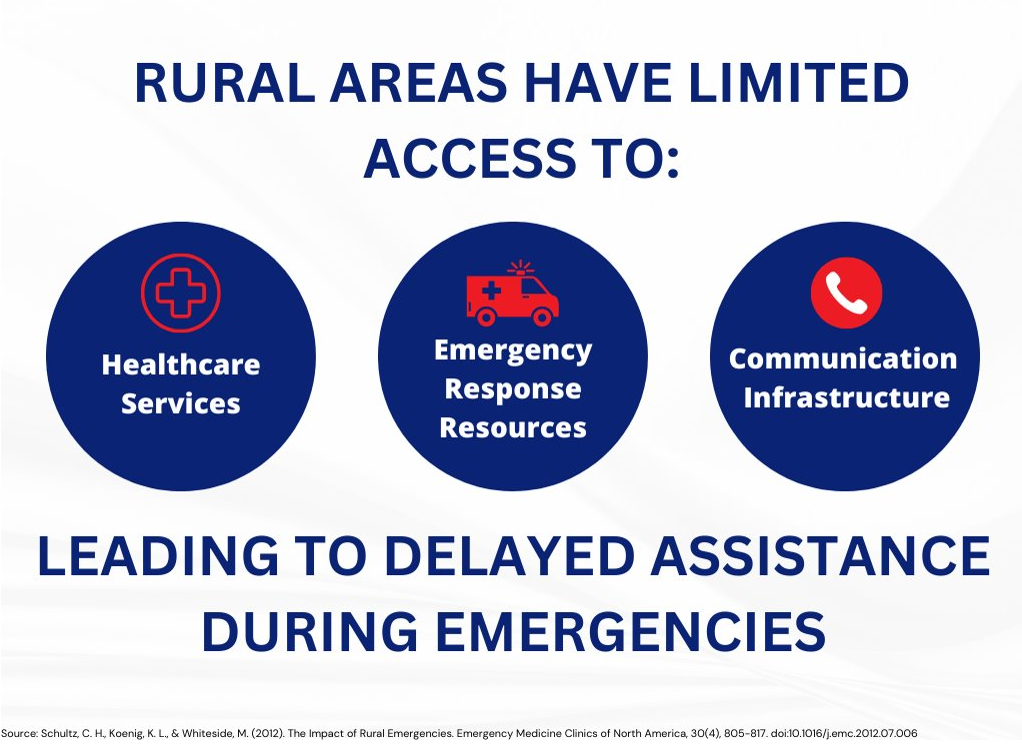
Rural Communities
Rural areas may have little ability to prepare formally for natural disasters and lack sufficient affordable housing inventory or basic infrastructure to recover.
Racial and Ethnic Minorities
Minority communities experience disproportionate health impacts due to existing disparities in healthcare access, socioeconomic status, and a lack of representation in decision-making processes during emergencies. Immigrant and refugee populations may have legal concerns that create a barrier to seeking help, as well as language barriers which can limit access to information and services during and after emergencies.
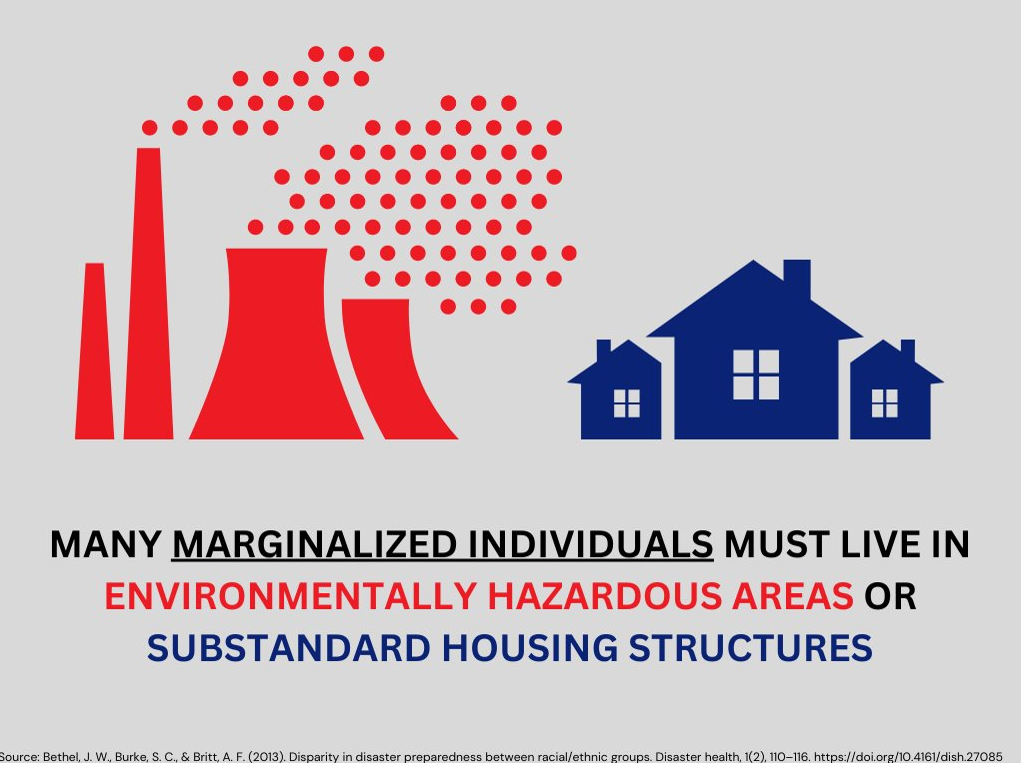
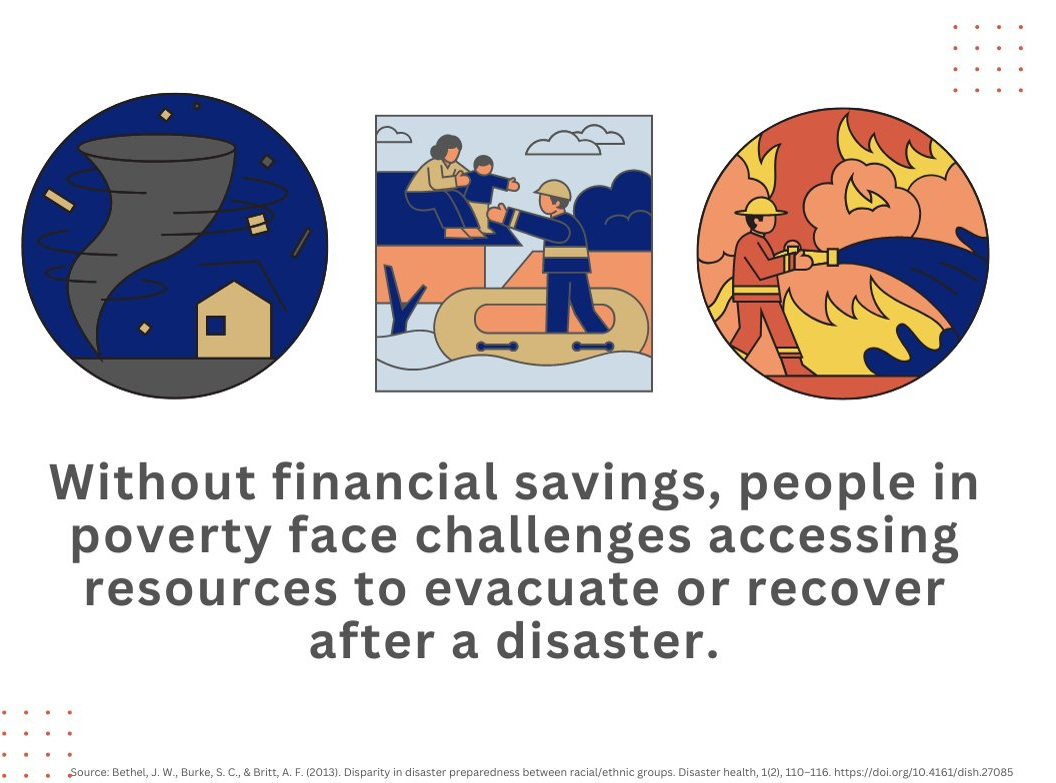
Low Socioeconomic Status
People of low socioeconomic status face several barriers to preparing and recovering from disaster, such as: living in substandard housing structures which are ill-equipped to withstand the impact of natural disasters, or lacking financial savings, making it difficult to evacuate or recover after a disaster. People experiencing homelessness lack stable housing and face the additional challenge of finding shelter and resources during emergencies.
Individuals with Disabilities
1,747,053 adults in Tennessee reported having one or more disabilities in 2021, and people with disabilities are more than twice as likely to live in Tennessee’s rural counties. Older adults with limited mobility or chronic health issues may also have difficulty evacuating or accessing necessary medical services.
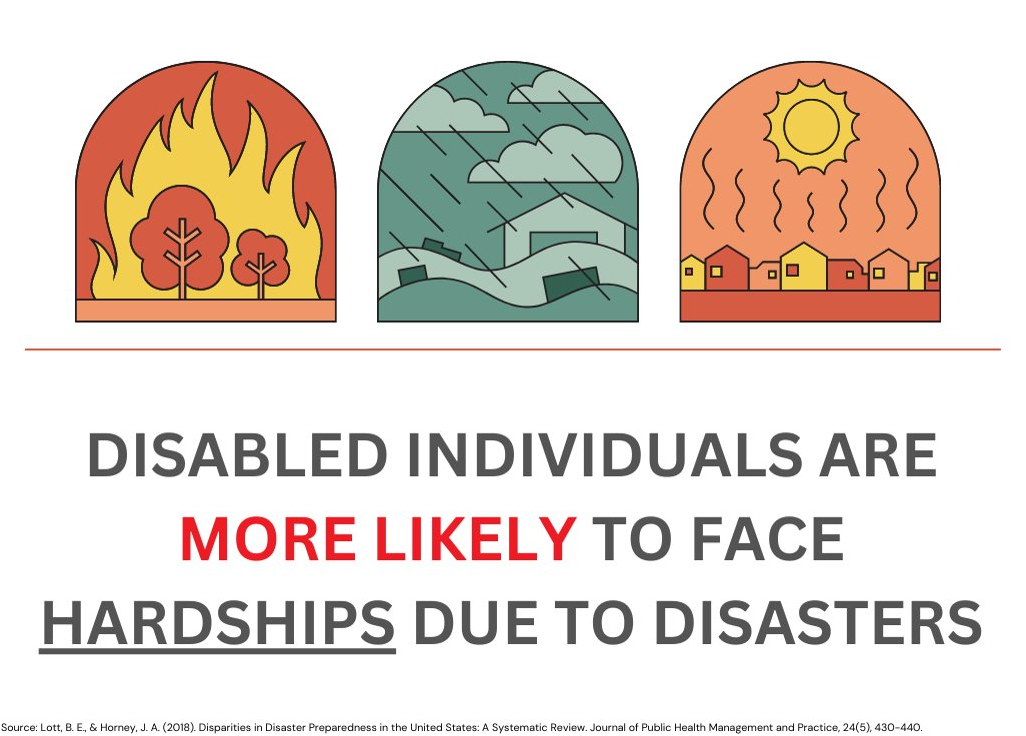
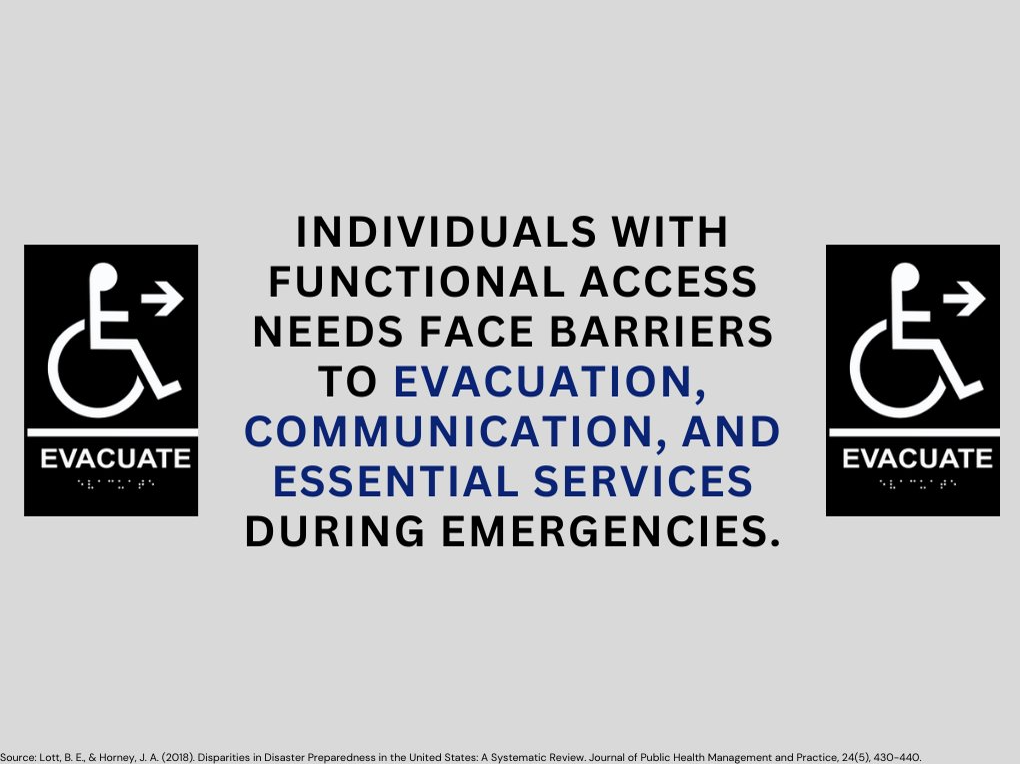
Activities and Programs: Evidence-informed, actionable, short-term steps that collaborative groups can take to address priority areas.
Policy and Systems Change: Systems change refers to how organizations or programs — such as school systems or health systems — are connected and work together to improve conditions to make change that lasts. This section contains evidence-informed, actionable, long-term steps that collaborative groups can take to address priority areas.
- Host emergency preparedness events for your community.
- Educate residents about the different needs of people in their community, considering factors such as age, disabilities, language proficiency, cultural backgrounds, and medical conditions. Inclusive emergency preparedness requires thinking ahead to acquire specific supplies like manual wheelchairs, oxygen tank equipment, pen and paper for those with communication-related disabilities, and comfort items or headphones for those who are easily overstimulated.
- Help residents create emergency kits with supplies that families depend on, making sure to include items for people with special needs, pregnant or breastfeeding women, children and pets. TEMA recommends including supplies like clean water, non-perishable food, medications, extra clothing, personal hygiene items, a first aid kit, a radio, and a tool kit. Keep alternate versions of these kits in your car and, if possible, at work. For a full list of supplies and how to get “2-weeks ready,” click here.
- Help people make emergency plans for their families or organizations, including instructions on evacuation routes and how to stay in contact in case families are split up. Establish clear communication channels that accommodate different communication styles and languages. Identify accessible evacuation routes and transportation options for individuals with mobility challenges. Offer assistance to neighbors who may need extra help during emergencies, such as elderly or disabled individuals. Share your contact information and offer to assist them.
- Share example plans in public spaces like libraries or participating local businesses. Spread the word in your community about the importance of personal emergency planning – post reminders of how to create a supply kit; share the information for local radio stations, TV broadcasts with closed captioning, and social media accounts of emergency agencies that would keep you informed during an event; and engage with diverse community organizations to understand their needs and challenges.
- Build a partnership with your Healthcare Coalition, collaborative networks of healthcare organizations and their respective public and private sector response partners that assist with preparedness, response, recovery, and mitigation activities related to healthcare organization disaster operations.
- Make emergency preparedness more inclusive as a community by including those with disabilities and special needs in discussions on emergency preparedness, ensuring their safety is a priority and that they can access resources. Evacuation routes, emergency transportation, and relief funding should all factor in the unique needs of older community members and people with disabilities. Communication efforts should also include the hard of hearing, blind, and those with language barriers.
- Connect with community leaders involved in disaster preparedness, including local emergency management agencies, community leaders, schools, churches, neighborhood associations, and businesses. Community leaders should collaborate with Tennessee Emergency Management Agency (TEMA) and other organizations to make plans, coordinate resources, and provide information to the public. Other community stakeholders to collaborate with include:
- The Arc Tennessee
- Local Health Departments
- County Health Councils
- Local Nonprofits
- Become a member of Tennessee Volunteer Organizations Active in Disaster (TNVOAD). TNVOAD is a network of organizations that work together to respond to disasters and emergencies. They coordinate resources and support from various organizations to provide effective disaster response and recovery.
- Consider establishing a Community Emergency Response Team (CERT) Program in your community, educating individuals about emergency preparedness and basic disaster response skills. CERTs may also assist professional responders during disaster situations, allowing them to focus on more complex tasks, as well as provide support to these professionals during planned community events. They are run through Volunteer Tennessee.
- Advocate for resources at the town or county level. Work with local officials to secure funding, equipment, and resources necessary for emergency preparedness initiatives. Advocate for the inclusion of preparedness measures in local policies and plans. By working together, you can help create a safer and more resilient community in the face of disasters.
- Vote for leaders who can understand the urgency of issues related to emergency preparedness. Engaged citizens can work together to raise awareness, organize events, and advocate for positive change.
Inclusive Emergency Preparedness in Southeast Tennessee
For the past few years, the Tennessee Department of Health has been partnering with local communities to ensure that emergency preparedness plans are inclusive for people of all backgrounds and abilities. TDH employees in the Southeast Region realized they had inadequate plans developed for people with disabilities and access and functional needs, including people who are blind, deaf, or who speak a language other than English.
Through multiple community partnerships, the Hamilton County Health Department and Southeast Regional Health Department have taken action to make their emergency preparedness plans more inclusive. They partnered with representatives with the Partnership for Families, Children and Adults of Chattanooga, the local deaf community advocacy groups, and the Department of Homeland Security. Together, they have accomplished the following:
- Created an emergency management interpreting team to provide American Sign Language (ASL) interpreters at important emergency sites, such as COVID testing sites and flu vaccine pods.
- Made strides to include individuals who are deaf, blind, or not proficient in English in their simulation exercises for Community Reception Centers, preparing staff and volunteers to know how to support all types of people during emergencies.
- Designed a resource that offers tips for how to support individuals with specific needs through emergency or stressful situations.
Through these multisector partnerships that share a common goal, TDH has been able to implement new procedures for emergency preparedness that are more inclusive overall.
For more information on this story, reach out to:
Robert Goff: Robert.f.goff@tn.gov
Sydney Clark: Sydney.l.clark@tn.gov
Tennessee Department of Health
- Detailed information on emergency preparedness and recovery from Tennessee’s Communicable and Environmental Diseases and Emergency Preparedness division has even more resources to explore and help you prepare.
- Tennessee Disaster Support Network is a web-based tool to assist Tennessee communities in meeting their needs before, during, and after a disaster. TDSN was designed to specifically reach out to populations that have unique needs, as well as the agencies that serve them, and has specific resources for people who are Deaf or hard of hearing, blind or visually impaired, or those who have other disabilities or chronic diseases which may present specific challenges in disaster preparedness.
- Tips for Assisting People with Access and Functional Needs During Emergencies presents guidelines for communicating with and aiding individuals who have specific needs during an emergency.
Tennessee Emergency Management Agency (TEMA)
- Ready TN is an app that can help you stay up-to-date on emergency notifications for the state.
- Mitigation Grant Opportunities exist to support projects in Tennessee that “significantly reduce or permanently eliminate the loss of life and property from natural disasters.”
American Red Cross – Tennessee Region
- Emergency Preparedness Training Programs are offered both virtually and in person for youth and adults across Tennessee. The Red Cross also provides emergency assistance to those affected by disasters, and always welcomes volunteers.
The Arc Tennessee
- Resources for before, during and after disasters help simplify the most critical steps of emergency preparedness.
Centers for Disease Control and Prevention
- Emergency Kit Checklist for Families with Children and Youth with Special Healthcare Needs offers specialized guidance for families whose kids require particular planning for their medical needs.
Federal Emergency Management Agency (FEMA)
- Risk management resources for connecting community partners and incorporating hazard mitigation into local planning are available on FEMA’s website.
Southern Nevada Health District
- This Supply Calendar serves as an example of how to appropriately prepare an emergency kit over the course of several months in small steps.
US Department of Homeland Security
- National Preparedness Month (NPM) is recognized each September to promote family and community disaster planning throughout the year. Find educational resources and learn more on the DHS website.
